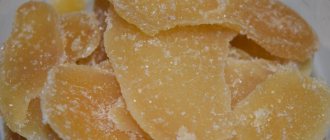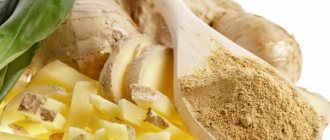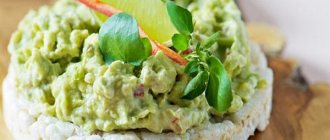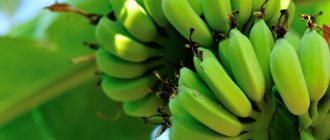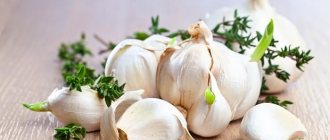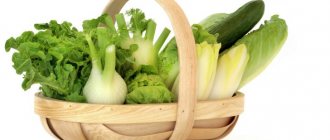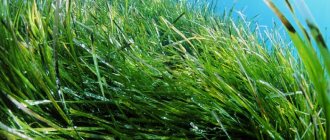Figs are the fruit that is sung by poets and prose writers of ancient and ancient literature. It is highly valued for its beneficial properties, the beauty of the tree itself, its ability to nourish and give joy. Dried, like fresh fruit, you want to eat endlessly: the seeds have a pleasant crunch, the taste is very delicate, slightly spicy. But is this always useful? How much can you eat this fruit and berry while remaining slim and healthy? Why did you love to eat these sultana berries? Why adults and children love dried figs today, the benefits and harms of which are completely incomparable, read in our article.
Dried figs are a legendary dried fruit. They wrote about the benefits of this fruit several centuries ago, because this berry is ancient. Figs are also known as figs or fig fruits, a powerful natural aphrodisiac, blood-healing fruit, and a plant source of iron and saturated fatty acids. The dried fruit was incredibly valued all over the world, revered as a symbol of procreation and maintaining a healthy libido. The tree is short with a wide crown, looks beautiful in itself and is considered an adornment of any garden.
Legends were made about the amazing properties of fig fruits; in ancient Rome they were called wine berries, because figs have not only a delicate, refined taste, but also many healing properties.
Beneficial properties of dried figs for the body
Fig is a berry with a delicate, slightly creamy substance, somewhat reminiscent of jelly. The taste of the fruit is not bright, refreshing and not at all cloying, although the fruit contains enough sucrose. Fresh figs grow in high mountain countries - Armenia, Azerbaijan, Abkhazia, where the season begins in August and ends in September. But fresh fruits are practically not stored and are very difficult to transport. Drying is a way to preserve these berries and preserve all the benefits of dried figs for the long winter months.
There are a lot of beneficial properties in berries:
- an infusion of milk with figs fights coughs no worse than many syrups of industrial origin;
- for colds, the benefits of figs are invaluable: it is a powerful diaphoretic, antipyretic - if in Russia they give tea with raspberries for this, then in Armenia they always drink dried berries, which are boiled for a long time in milk or a small amount of water (adults are given wine in which the figs were boiled and stewed). figs);
- this is a natural catalyst for any digestive problems: bloating, gastritis recede even at the acute stage if you eat dried berries in their dried form, washed down with water;
- dried fig fruits are always indicated for any form of anemia - they stimulate the production of red blood cells, revitalizing and rejuvenating the blood, changing its composition for the better;
- due to the high fiber content, it normalizes intestinal function;
- increases intelligence, because beneficial microelements stimulate brain activity, improve performance, relieving fatigue and irritability;
- improves heart function - dried berries contain potassium necessary for the cardiovascular system, reducing the risk of heart attacks and strokes;
- dried fruits are an excellent natural remedy against stress, they relax the nervous system, no worse than any sedative;
- berries have the ability to improve metabolism, causing weight loss many times faster;
- remove waste, poisons, and toxins from the body, so in case of any poisoning, compote is a real salvation, and also very tasty.
Finally, do not forget about the main purpose of fruits, sung throughout the centuries. The dried fruit is an aphrodisiac, a stimulant, a stimulant of hidden desires. It was for this reason that fig fruits served as a treat for those concubines whom the eastern sultans honored with being invited to their personal chambers. The Sultan himself feasted on dried fruits, washing them down with fresh lemon sorbet with ice to restore male strength.
Which figs are healthier, dried or fresh?
You can eat fresh figs endlessly, only reveling in their delicate, unobtrusive taste. But the paradox is that when dried, water comes out of the berries, and at the same time the total calorie content of the product decreases. If fresh ones “weigh” 30 kcal each, then dried ones are only 20 (this is the calorie content of one fruit, which weighs a maximum of 50-60 g).
But the fiber remains in full, so figs remain an excellent supplier of valuable substances in any form. But because of the sugar, it is important to eat fig jam in minimal quantities - nutritionists strongly recommend not to eat more than 2-3 tablespoons at one tea party.
Application
Figs are eaten both fresh and dried. Dried figs have wonderful taste. It is used to prepare compotes and pie fillings. Dried figs go well with red wine, nuts and cheese. In addition, medicinal decoctions are prepared from dried figs to treat coughs, sore throats, remove kidney stones and many other diseases.
Market Analytics
- Global cosmetics market 2021: an unprecedented test for the global cosmetics industry
- Top 10 Cosmetic Research and Development of 2021
- 2020 in the beauty industry – innovation without borders
Convenient search for beauty salons on our website
Beauty salons in Moscow Beauty salons in St. Petersburg Beauty salons in Ekaterinburg Beauty salons in Novosibirsk
Latest blog posts on our website
- Naturecream / Properties of the “Sunny” oil itself
- Naturecream / “Sugar” wrinkles - or what glycation can do
- Naturecream / Esterified oils
- Naturecream / Arnica - the magical plant of alchemists
- Naturecream / Tremella Extract - Snow Mushroom Detox for Skin
- Prostye-sovety / How to visually enlarge your lips with makeup
- Naturecream / Apricot kernel oil for face
- Naturecream / MATRIXYL3000 - the best skin elasticity stimulator
- Naturecream / SPF in Natural Oils
- Naturecream / Geranium (Pelargonium) oil for skin health and beauty
Latest forum topics on our website
- Natalya / How to properly make a gelatin mask?
- Mrs._Smith / Badly sunburned! What to do?((
- Ice / Is it necessary to combine fitness classes with a diet?
- Antonova / What can be used for hair loss?
- Radio operatorKat / Who was on a protein diet?
Other articles in this section
| Coconut Where the first coconut tree grew remains a mystery. This is an amazing tree, the only plant that can survive on sea water. And the fruit of a palm tree can give rise to a new tree by making a long sea voyage. |
| Sunflower seeds Sunflower is a plant from the Asteraceae genus. This species has been cultivated for a very long time. Apparently this happened around 3000 BC. in the North America region. Archaeological research suggests that the first users of sunflowers were North American Indians. |
| Dried kumquat Kumquat is a tropical fruit of the citrus family, oblong in shape, bright yellow in color, the size of which does not exceed the size of a walnut. This fruit is also known as fortunella or kincan. In appearance it resembles a small oval-shaped orange. Fruit length – 3-5 cm, width – 2-4 cm. |
| Cashew Cashew occupies a special place in the world of gourmet nuts. It is the fruit of an evergreen tree that originally grew in South America and was eventually transported to Europe. The fruit of the cashew tree consists of two parts: the cashew apple and the nut itself. The nut ripens in a dark, hard shell on top of a juicy, bright apple. The nut shell itself can be dangerous to human skin; contact with it can cause burns and blisters, so cashew nuts are carefully removed from the shell before being sold. They are then thermally treated until the oil completely disappears. |
| Pistachios In the Sumakhov family there is a small evergreen plant called pistachio. The plant requires a lot of heat and moisture, so it is most common in tropical latitudes. |
| Dried bananas Banana is a herbaceous plant that is considered the tallest among herbs. It can reach a height of 8 meters. The fruits, used as food and very popular all over the globe, grow in clusters and are classified as berries. There are more than 40 species of this plant. |
| Prunes Prunes are dried plum fruits. The best prunes are obtained by drying the Hungarian Italian plum variety. Fruits for prunes are taken only fully ripened with the maximum content of nutrients and sugars (minimum 10%). |
| Dried peach Peach is a southern fruit tree belonging to the Rosaceae family. China is considered the birthplace of the peach. Valued for its tasty, juicy and aromatic fruits. Peach is used to make jam, compotes, jams, and is also used in dried form. |
| Candied papaya Papaya first came to the European continent in candied form (in the form of candied fruit) in the 16th century. This exotic fruit has been cultivated by the Indians of Central America and Mexico since ancient times. They valued papaya very much for its medicinal properties and rapid growth. After the discovery of America, Europeans also learned about papaya. Due to the resemblance of papaya fruits to melon, they dubbed it the “melon tree.” Another name for papaya is “breadfruit”, as the fruit smells like fresh bread when baked. Appreciating the beneficial properties of this exotic plant, Europeans began attempts to cultivate it in southern Europe and Africa. Thanks to her unpretentiousness, she took root there perfectly. In Russia, attempts have recently begun to grow papaya in the south of the country; now there are trial plantings there. |
| Poppy Poppy is a genus of annual or perennial herbaceous plants of the Poppy family. The poppy fruit is a cylindrical or spherical capsule, covered with a ribbed disk on top. In the middle of the fruit capsule there are many small seeds of black, gray or gray-white color. |
Composition and calorie content of dried figs
As we have already noted, the calorie content of dried figs is even lower than fresh ones, which means that they can be eaten, especially by anyone who cares about their health. There are 250 kcal per 100 g of dried figs, and there are much fewer of them in one berry (a little more than 30 for a large fruit). The composition contains a rare substance - tryptophan, which is directly involved in the production of vitamin B3 and melatonin. A restful and healthy sleep and a feeling of vigor depend entirely on the quantity and quality of tryptophan.
In addition, figs contain:
- polyunsaturated acids Omega-6, Omega-3. Do you remember how often nutritionists remind us of the importance of the element? Acids are vital for maintaining the elasticity of blood vessels, skin, and the health of the reproductive system (especially the female one);
- potassium – in the cardiovascular system normalizes the contraction of the heart muscles, strengthening the heart, helping to avoid the development of arrhythmia;
- Sodium is essentially a natural salt. Those who adhere to a salt-free diet know very well that the dried fruit tastes slightly salty, so it contains salt. And sodium is necessary for the body just like glucose. There is also enough of it in fig berries.
- iron is a microelement involved in many biological processes in the body. With reduced hemoglobin, it will be useful to regularly consume dried berries.
- vitamin PP (nicotinic acid) - it is worth noting that a lack of vitamin B3 causes not only vitamin deficiency, but also early aging, problems with joints, heart, changes in hormonal levels and other diseases. There will be no problem if you always have 10 pieces of dry figs in stock.
A few dried berries replenish your daily iron requirement and are pleasant and easy to eat. Plus, dried fruits contain pectins, complex enzymes (and they appear only after the fruit is dried!), there are enough antioxidants, fiber, vitamin C and manganese. At the same time, figs have very few age restrictions - in the countries where they grow, dried berries are eaten almost from birth, of course, in the form of decoctions based on them. In Russia, children are also familiar with figs; their benefits are determined by age-related contraindications. Pediatricians recommend taking a closer look at the child’s reaction and giving figs no earlier than 3 years.
How to store it correctly
Fig berries must be stored in processed form, but fresh ones have an ultra-short shelf life.
Dried
Not everyone knows how to store dried figs. In a dry, cool, dark place it is stored for several months: the longer the dryer the air and the lower the temperature. If the conditions are not met, the product becomes damp and harmful insects infest it. The container must be tightly sealed. Exposure to sunlight is excluded.
Did you know? The ancient Greeks attributed the ability to give courage and strength to fig fruits, so athletes who competed in the Olympic Games included figs in their diet and consumed them in large quantities. Warriors took dried berries with them, especially if they had long and tiring marches ahead.
Before eating, it is advisable to soak dried figs for an hour in warm water, which will dissolve the chemicals. Boiling water can destroy some of the beneficial substances of the product.
Fresh fruits
If you are lucky enough to find yourself at the end of summer in a region where this amazing berry grows, and you managed to purchase it for consumption, you better eat it as soon as possible.
If there is a need for storage, use the refrigerator. The temperature should be approximately 1 °C. The maximum shelf life is several days , depending on the original state of the product.
If left at room temperature, the figs will ferment the same day.
You can also freeze it. This will help preserve the valuable properties of the product. Such raw materials should be stored at a temperature of –15 °C.
Dried figs: benefits for children
Since figs are a completely natural medicine, they are recommended to be used to treat colds in children. As a strong expectorant, it is recommended at the first signs of a cold, if the baby begins to cough. Also, it is the dried fruit that often saves from a protracted cough when it does not go away for weeks, and parents do not know what medicine will save them. Brew figs with milk, add a little honey and the cough will go away!
It is also recommended to give dried figs to children instead of candy as sweets - they are tasty, spicy, healthy and do not destroy teeth like factory-made candies. Smart mothers grind figs in a blender along with dried apricots and prunes, and then make candies from them, rolling them, like Raffaello, in fresh coconut flakes. That is why in a house with small children there should always be figs, at least a few berries.
Dishes
Most often, fig tree fruits are used for snacking as an independent dish or in mixtures with nuts and other dried fruits, as well as in combination with natural dry wines, high-quality cheeses and dry-cured meats. They are used to prepare chocolate-covered candies, make preserves and jams, add them to baked goods, and use them as a base for various drinks - compotes, homemade wines and liqueurs. In any case, it must be taken into account that when using fresh figs, the calorie content of the finished dish will be significantly lower than when adding dried or dried fruits to it.
In Apple pie order
Wash and steam 12 pieces of dry fig tree fruits in boiling water for 2 minutes. Then place in a colander and leave to drain. Grind ½ cup of walnut kernels in a blender, add 2 tsp. honey Each berry is blotted with a napkin and a small transverse incision is made on it, inside which the nut-honey mass rolled into balls is placed. Melt a 100-gram chocolate bar in a water bath, dip the prepared dried fruits in it, place it on a cutting board and sprinkle with chopped walnuts.
The calorie content of figs in chocolate prepared according to this recipe is 432 kcal/100 g. Despite the high indicator, these will be very healthy calories, including valuable substances not only from the fig tree, but also from honey, walnuts, and chocolate. This product can be consumed for breakfast or as a healthy snack in the morning, as well as for athletes after training to fill the “carbohydrate window”.
With prunes
Grind 10 pcs in a blender or meat grinder. prunes and 3 walnut kernels. Mix with 1 tbsp. l. sour cream and 1 tbsp. l. granulated sugar. This amount of filling is designed for 10 pieces of fresh figs. On each of them, 2 cuts are made crosswise on top and opened a little. The filling is placed in the middle and you get another delicious vitamin dessert that is ready to eat.
In this recipe, the calorie content of figs with prunes will be 153 kcal/100 g. But if necessary, you can remove sugar from it, since the dried fruits used are quite sweet in themselves. This will reduce the total calorie content of the product to 100 kcal/100 g.
What are the benefits of dried figs for women?
When preparing for childbirth, during pregnancy in the second and third trimester, it is very important to eat as little industrial sweets as possible, but lean on healthy sweets made from dried fruits and berries. Dried figs perfectly relieve cravings for sweets, and at the same time prevent the appearance of edema. Everyone knows that sweets and baked goods retain water, which often leads to gestosis.
During pregnancy and breastfeeding
The main task of a nursing mother is to feed the baby tasty and satisfying, but not to cause allergies in him. Russian pediatricians do not object to halva (after all, we Russians grew up on sunflower seeds), but Armenian pediatricians have nothing against figs. Still, before eating dried fruit, you should be vigilant and eat one dried fig. If there is no reaction (there are no rashes or spots on the baby’s skin), the dose can be safely increased to 3 pieces at a time. It is still not recommended to eat more than 5 a day.
Figs for men
Men love dry figs and rightly so. It is this dried fruit that has a great effect on their reproductive function. Ancient healers attributed the ability to make sperm alive to the dried berry and literally force-fed figs to princes, on whose conscience lay the continuation of royal dynasties. Back then, dried fruit was expensive, worth its weight in gold; now buying several dried berries costs around 200 rubles.
Men also took decoctions of fig tree fruits for nervous disorders, insomnia, or, if just for the sake of it, as a snack when doing heavy home improvement work. In eastern countries, men wore dried figs in tueskas and ate as soon as the first signs of hunger or fatigue occurred.
Contraindications to the use of dried figs
Like any dried fruit, dried figs have beneficial properties and contraindications for consumption, which doctors advise you to remember. So, the fruit should not be eaten with the following diagnoses:
- Gout is caused by oxalic acid, which is also found in figs. There is a high probability of exacerbation of attacks.
- For chronic intestinal diseases. Dried fig fruits, like any dried fruits and berries, perfectly improve peristalsis, but sometimes they provoke frequent bowel movements: the fiber slightly distends the intestines, which is why failure can occur completely unpredictably. Do you have problems with your stool? Please consult your doctor before putting delicious figs into your mouth.
- Diabetes mellitus. No, at some stages the fruit will not be prohibited, but again you need to consult a doctor and possible restrictions on the amount of dried berries consumed.
- Under 1 year of age. Figs are unusual for Russian children, and a reaction to the fruit is possible - allergies, redness, rashes. It’s easy to avoid this if you introduce your child to a small piece for the first time by brewing it in compote or milk. Then you can safely give from 3 to 5 pieces per day.
All this is insignificant compared to the bliss that anyone will experience by brewing a cup of fresh fragrant tea and drinking it with figs and a dessert spoon of honey. Figs, benefits and pleasure are inextricably linked. So is it worth denying yourself such delights of life? We eat dried figs in moderation and stay happy and healthy.
